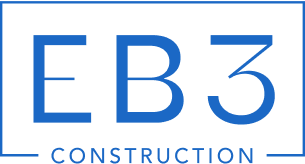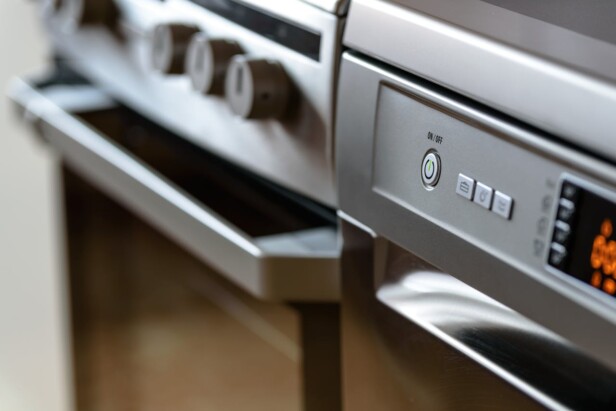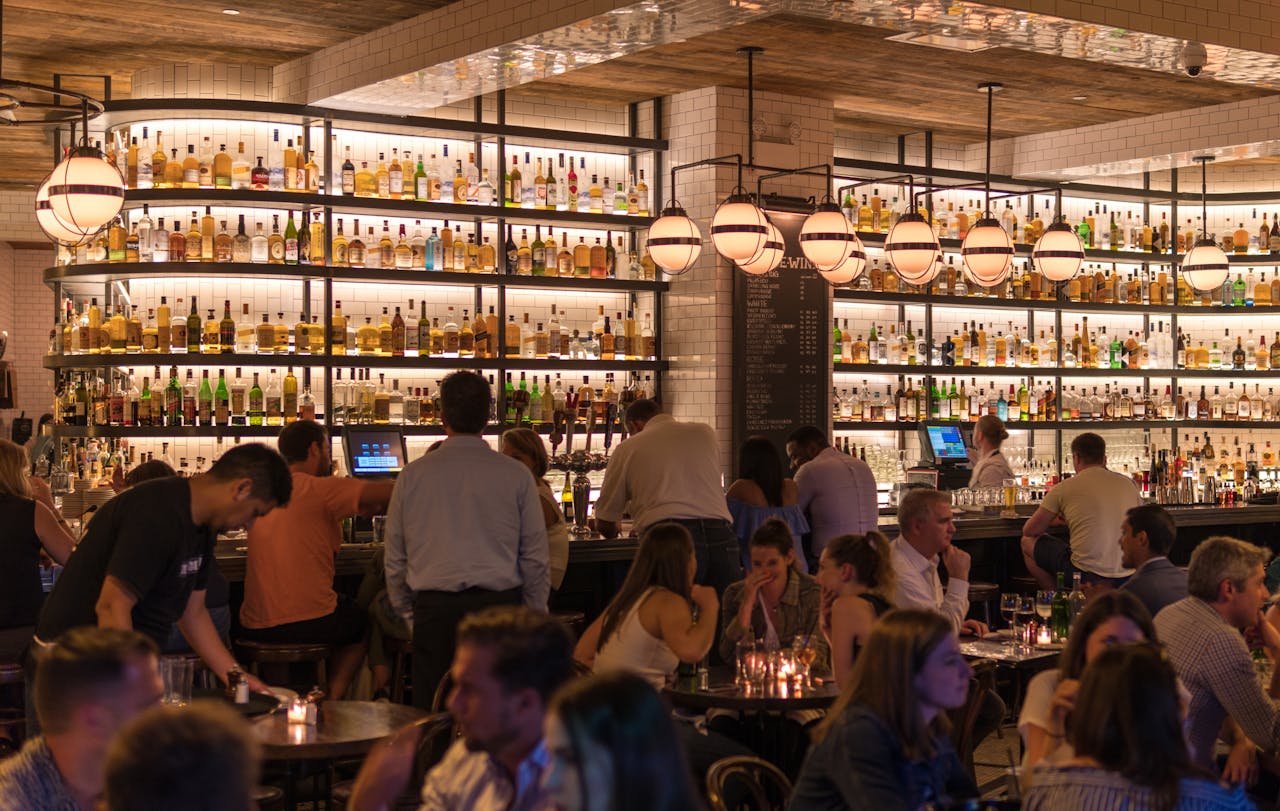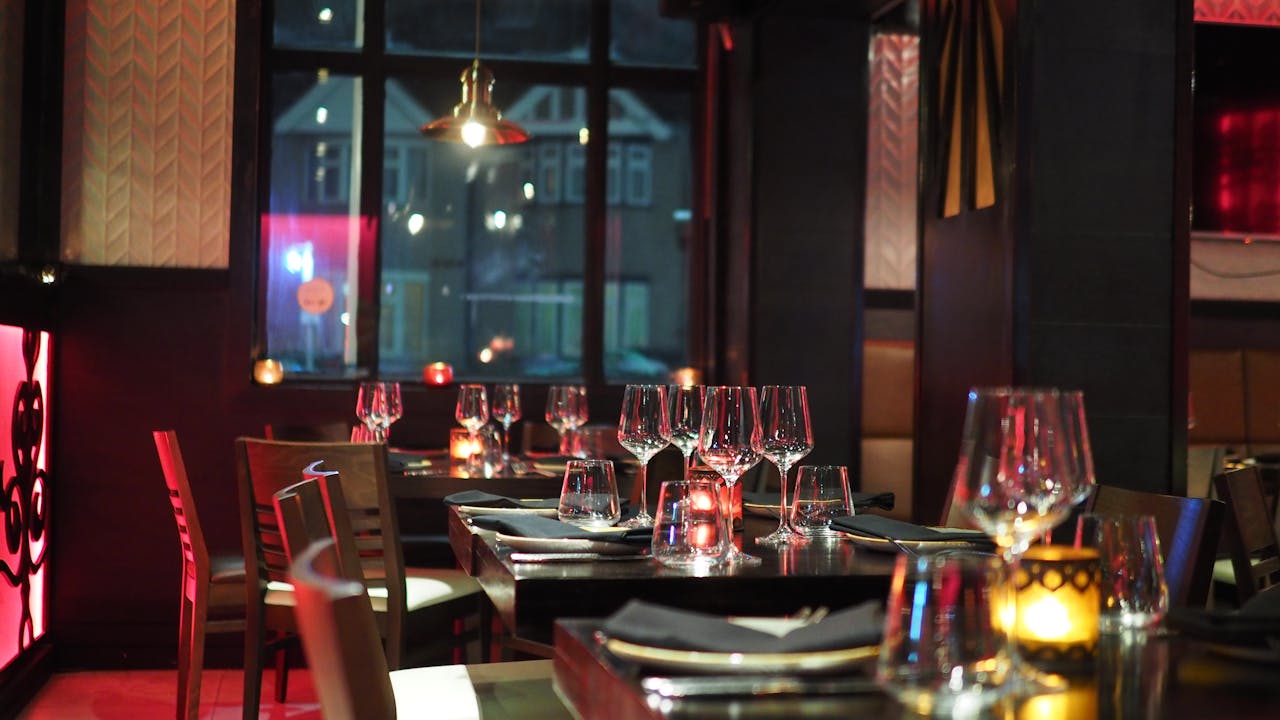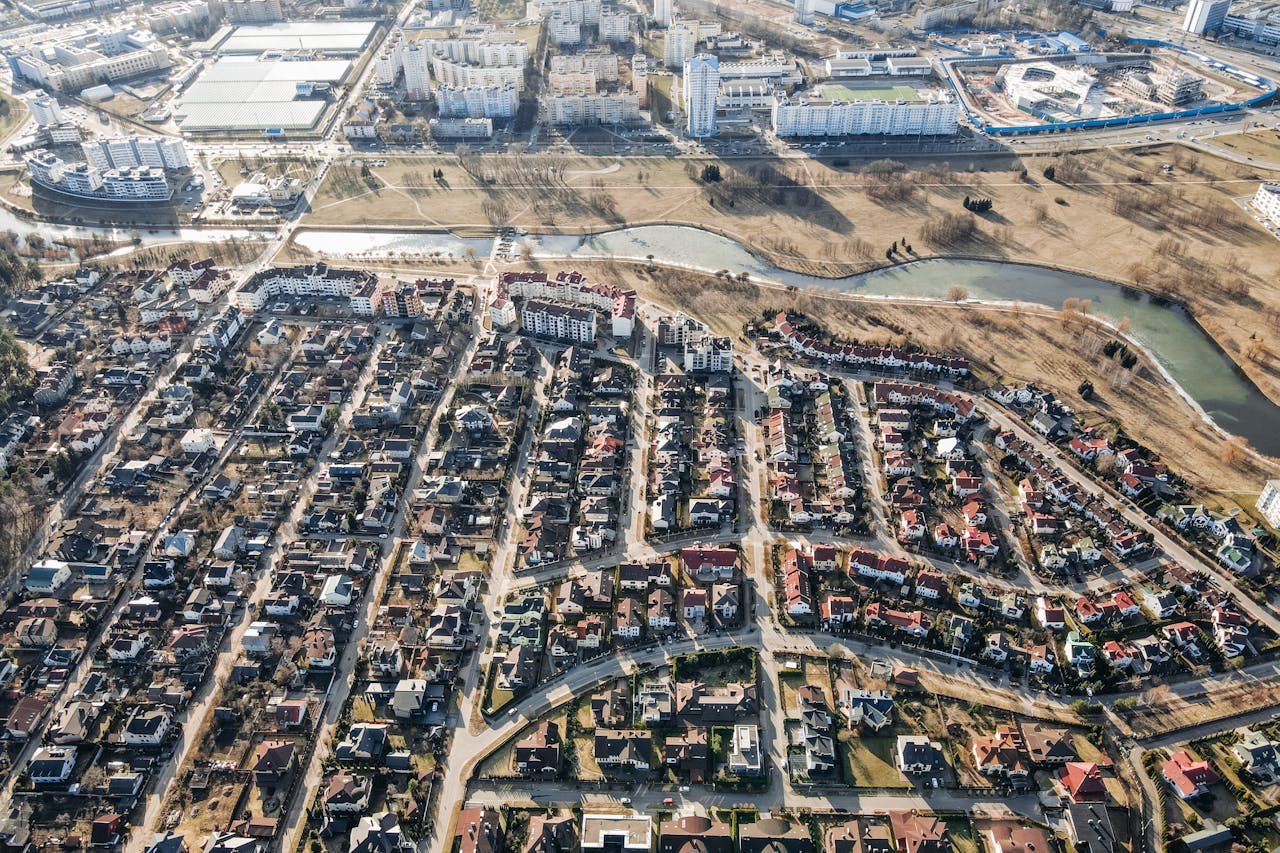A ghost kitchen is a delivery-only restaurant without a dining room, signage, or customer-facing storefront. These commercial cooking facilities, also known as cloud kitchens or dark kitchens, prepare food exclusively for third-party delivery platforms and online ordering systems. Orders flow in through mobile apps and websites rather than walk-in traffic.
A ghost kitchen construction contractor specializes in designing and building these streamlined commercial kitchen build-outs. We handle the technical requirements that traditional restaurant construction often overlooks, from courier pickup zones to specialized ventilation systems. Our scope typically covers private kitchen bays, commercial hoods, grease interceptors, multi-bay sinks, walk-in cold storage, and secure delivery access points while ensuring all MEP utilities support efficient food preparation and meet health inspection standards.
What Core Spaces, Equipment, And Utilities Should Be In Scope?
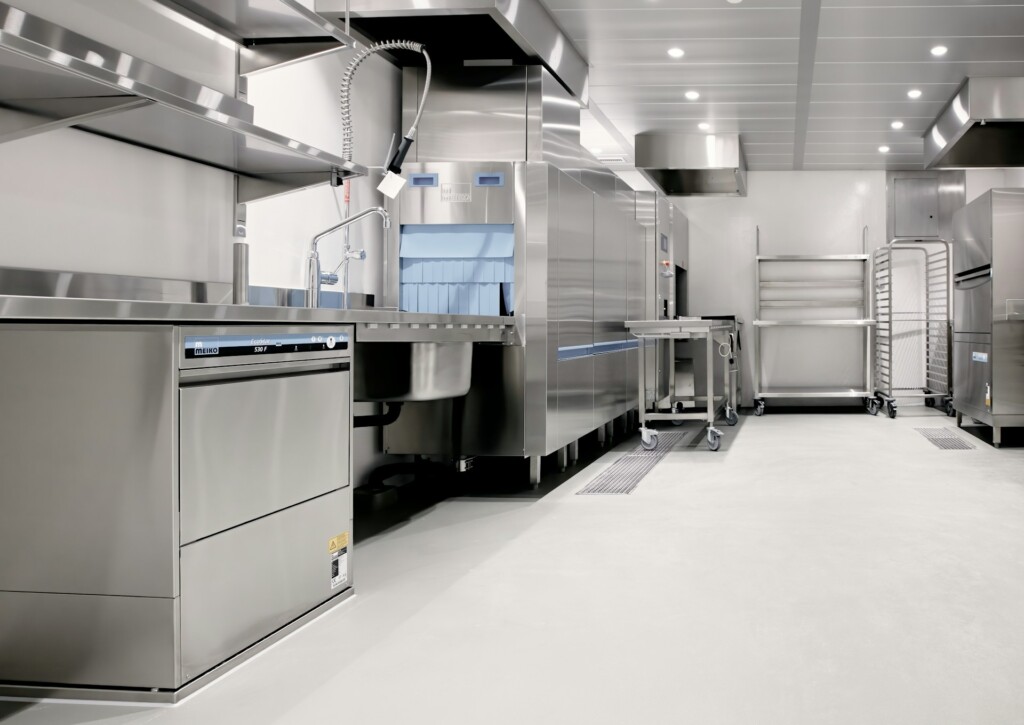
We structure ghost kitchen builds around the complete delivery workflow. Each component supports order processing, food preparation, and courier handoff without wasted steps or bottlenecks.
Essential Spaces For Delivery Operations
The private kitchen forms the production core. This dedicated cooking space prevents cross-contamination and allows focused preparation for multiple delivery brands. We position it for efficient ingredient flow from storage to packaging.
The driver pickup area requires strategic placement near the exit but separate from prep zones. We design secure handoff points that protect food quality while keeping couriers moving. Staff safety and order accuracy depend on this controlled transfer zone.
Supporting spaces include staff lockers for personal items, restrooms that meet health code requirements, and a mop wash station for cleaning equipment. These areas must comply with local regulations while maintaining operational efficiency.
Storage zones break into three categories. Cold storage holds perishable ingredients at proper temperatures. Freezer storage maintains frozen items for extended shelf life. Dry storage houses non-perishable supplies with easy restocking access.
Required Equipment For Food Safety
The commercial kitchen hood serves as the ventilation backbone. We install systems that handle cooking smoke, grease, and heat while meeting fire safety codes. Proper exhaust ensures comfortable working conditions and regulatory compliance.
A grease interceptor captures fats and oils before they enter the drainage system. This equipment prevents costly plumbing blockages and satisfies municipal waste requirements. We size interceptors based on kitchen volume and local standards.
The 3-compartment sink handles warewashing with wash, rinse, and sanitize functions. Health departments require this configuration for manual dishwashing protocols. We pair it with adequate hot water supply and chemical dispensing systems.
Additional sinks include prep sinks for food preparation and hand sinks for staff hygiene. Each serves specific health code functions that inspectors verify during approval visits.
Critical Utilities And Connectivity
Gas points supply cooking equipment with reliable fuel connections. We plan distribution to ranges, ovens, and specialty equipment while ensuring proper shut-off access and leak detection systems.
Ample power supports high-demand equipment like refrigeration, ventilation, and cooking appliances. We calculate electrical loads for peak operations and include dedicated circuits for critical systems.
High-output lighting maintains food safety standards and worker productivity. LED fixtures reduce energy costs while providing consistent illumination across all work areas.
Hot and cold water lines serve multiple functions from cooking to cleaning. We design systems that deliver adequate pressure and temperature while meeting health department specifications.
The gas and fire safety system integrates detection and suppression equipment. Automated systems respond to emergencies while manual controls allow staff intervention when needed.
WiFi and ethernet connectivity support order management systems. Many operators use single tablets to coordinate multiple delivery apps, so we plan power and data drops at expo stations where orders get packaged and assigned to drivers.
Maintenance And Operational Access
We design cleaning access for daily sanitation and deep cleaning schedules. Equipment placement allows staff to maintain surfaces, floors, and hard-to-reach areas that health inspectors examine.
Hood and flue cleaning requires periodic professional service. We ensure adequate access for technicians to maintain ventilation systems and document compliance with fire safety regulations.
Grease trap cleaning happens on scheduled intervals to prevent backups and odors. Access panels and service connections accommodate pumping trucks and maintenance crews without disrupting kitchen operations.
Waste and recycle areas handle daily disposal needs. We position collection points for easy staff access while keeping them away from food preparation zones.
Pest control measures include sealed entry points, proper drainage, and treatment access. Regular service maintains health department standards and protects food safety throughout operations.
How Should Cold Storage And Modular Construction Be Planned?
Prioritizing Modular Panel Systems For Ghost Kitchen Efficiency
Walk-in coolers and walk-in freezers form the backbone of ghost kitchen cold storage operations. Modular insulated panels transform these installations from complex builds into streamlined assemblies. We use prefabricated panels that connect through tongue-and-groove joints, enabling rapid field construction without traditional framing methods.
Fast assembly translates directly to reduced labor costs and shorter construction timelines. Each panel arrives pre-manufactured with precise dimensions, eliminating field cutting and reducing waste. The modular approach means we can adapt storage capacity as operations expand or change menu offerings.
Future expansion becomes straightforward when ghost kitchen operators need additional cold storage. Adding panels to existing structures requires minimal disruption to ongoing operations. Relocation flexibility proves valuable for operators who lease temporary spaces or need to move operations.
Construction Features For Durability And Performance
Modular panels feature bonded metal skins that provide structural integrity without requiring perimeter wood framing. The high-density insulation core delivers thermal performance while maintaining panel strength under load conditions. Interior and exterior metal surfaces resist damage from daily use and cleaning protocols.
Cam-lock ceiling technology accelerates installation schedules significantly. These systems allow ceiling panels to lock together mechanically, creating secure connections without adhesives or extensive fastening. The technology enables faster project completion while maintaining structural performance.
Outdoor installations require additional weather protection features. Single-piece membrane roof caps shield exposed panels from rain, snow, and temperature fluctuations. This protection extends equipment life and maintains consistent internal temperatures despite external weather conditions.
Energy Compliance And Efficiency Standards
All walk-in cooler and walk-in freezer panels must meet EISA compliance requirements under the Federal Energy Independence & Security Act of 2007. These standards mandate specific R-value minimums for insulation performance. Compliance ensures energy efficiency while meeting federal regulations for commercial refrigeration equipment.
Energy efficiency directly impacts operational costs for ghost kitchen operators. Higher-performing panels reduce cooling system runtime and lower electricity consumption. This efficiency becomes more critical in delivery-only operations where margins depend on controlling overhead expenses.
Layout Planning For Production Flow
Ghost kitchens prioritize efficient bulk storage over display configurations. Cold storage design focuses on maximizing capacity while maintaining easy access for restocking operations. We position walk-in units near prep stations to minimize staff movement during high-volume periods.
Kitchen restocking flow determines optimal panel configurations and door placement. Single-access doors work well for smaller operations, while larger ghost kitchens benefit from multiple entry points. Door positioning affects traffic patterns during busy delivery windows when staff need quick access to ingredients.
Most ghost kitchen cold storage emphasizes functional access over aesthetic considerations. Glass-door options exist but typically serve specialized applications rather than standard bulk storage needs. The focus remains on temperature control, capacity, and operational efficiency rather than customer-facing displays.
How Do Ghost Kitchens Compare To Traditional Restaurants On Cost, Staffing, And Schedule?

The construction and operational differences between ghost kitchens and traditional restaurants create significant contrasts in investment requirements, staffing models, and development timelines. These variations directly impact how we approach each project type and what developers and property owners can expect during the construction process.
Space Requirements And Investment Costs
Traditional brick-and-mortar restaurants typically require approximately 2,000 square feet to accommodate dining areas, front-of-house operations, and kitchen facilities. Ghost kitchens operate efficiently in roughly 200 square feet, focusing exclusively on food preparation and delivery coordination spaces.
The upfront investment disparity reflects these space differences substantially. Industry data shows traditional restaurant buildouts averaging around $1 million, while ghost kitchen construction projects typically range from $30,000 to $100,000 depending on location and complexity. We’ve found that ghost kitchen projects can achieve full operational readiness with significantly lower capital requirements due to eliminated dining room construction, reduced HVAC loads, and streamlined kitchen equipment needs.
Break-even timelines favor ghost kitchens considerably. Traditional restaurants often require approximately five years to reach profitability, while ghost kitchens can break even within six months of operation. This accelerated return stems from lower overhead costs, reduced staffing requirements, and focused delivery revenue streams.
Staffing Models And Operational Structure
Traditional restaurants demand extensive front-of-house teams including servers, hosts, bartenders, and dining room managers alongside back-of-house kitchen staff. Ghost kitchens eliminate front-of-house requirements entirely, operating with streamlined teams of 3-5 back-of-house staff members focused on food preparation, packaging, and delivery coordination.
We design ghost kitchen layouts to maximize efficiency with minimal staffing needs. Kitchen flow patterns prioritize single-person workstations, consolidated prep areas, and direct access to pickup zones. Traditional restaurant designs must accommodate customer flow, server stations, and complex dining room logistics that require larger teams and more complex coordination.
Labor cost structures differ dramatically between models. Traditional restaurants typically allocate 30% of revenue to labor costs, while ghost kitchens often operate with 20-25% labor costs due to eliminated front-of-house positions and streamlined operations.
Construction Timeline And Development Speed
Development schedules favor ghost kitchens substantially. Traditional restaurant construction projects average 52 weeks from concept to opening, while ghost kitchens can launch within 8 weeks of construction start. These compressed timelines result from simplified designs, reduced permit complexity, and focused construction scopes.
We coordinate ghost kitchen construction around three critical timeline factors: permit processing, equipment procurement, and utility installations. Health department permits and building permits follow similar processes for both models, but ghost kitchens avoid complex dining room regulations and ADA compliance requirements that can extend traditional restaurant permitting timelines.
Equipment lead times drive schedule planning significantly. Commercial kitchen equipment requires 4-8 weeks for delivery and installation regardless of project type. However, ghost kitchens require fewer equipment types and simplified installations compared to traditional restaurants with extensive front-of-house systems.
| Aspect | Ghost Kitchen | Brick-and-Mortar Restaurant |
|---|---|---|
| Space Requirements | ~200 square feet | ~2,000 square feet |
| Initial Investment | $30,000 to $100,000 | ~$1 million |
| Break-even Time | Within 6 months | ~5 years |
| Staffing Model | 3-5 back-of-house staff | Front-of-house and back-of-house teams |
| Labor Cost | 20-25% of revenue | 30% of revenue |
| Construction Timeline | 8 weeks | 52 weeks |
Disclaimer: Pricing figures are based on publicly available market data and are intended for general estimation purposes as of November, 2025. They do not represent a formal quote from EB3 Construction. Actual costs will vary by project scope, location, labor rates, and material prices.
Permit Requirements And Regulatory Compliance
Both ghost kitchens and traditional restaurants require identical core permits: business licenses, food service permits from local health departments, proper zoning approvals, and building permits. However, ghost kitchens avoid additional permits related to occupancy loads, parking requirements, and public accommodation standards.
We plan construction schedules around permit processing workflows. Health department inspections focus on food safety systems, ventilation adequacy, and sanitation facilities regardless of service model. Building department reviews emphasize structural integrity, fire safety systems, and utility capacity for both project types.
Zoning considerations can favor ghost kitchens in industrial or mixed-use areas where traditional restaurants might face restrictions. Many jurisdictions classify ghost kitchens as food manufacturing rather than restaurant operations, opening additional location opportunities.
Budget Strategies And Equipment Selection
Cost-effective ghost kitchen construction prioritizes high-ROI equipment investments. We recommend energy-efficient commercial equipment that reduces long-term operating costs while meeting health code requirements. Equipment selection focuses on versatility and durability rather than customer-facing aesthetics.
Phased construction approaches work particularly well for ghost kitchens. Initial buildouts can focus on core cooking equipment and basic storage, with future upgrades planned for expanded menu offerings or increased capacity. This flexibility allows operators to test markets and adjust investments based on demand patterns.
Material selection emphasizes durability and maintenance efficiency. Commercial-grade flooring, wall finishes, and equipment withstand intensive cleaning protocols required for food safety compliance. We avoid decorative elements that add cost without operational benefit.
Layout Flexibility And Future Adaptability
Ghost kitchen layouts benefit from modular design approaches that accommodate menu changes and operational pivots. We specify mobile equipment stations, flexible utility connections, and adaptable storage solutions that support concept evolution without major renovations.
Traditional restaurants face significant modification costs when changing concepts due to fixed dining room layouts, customer flow patterns, and aesthetic commitments. Ghost kitchens can reconfigure operations, adjust equipment placement, and modify workflow patterns with minimal construction impact.
Modular equipment selection supports operational flexibility. Mobile prep tables, adjustable shelving systems, and relocatable storage units allow space reconfiguration as menu offerings evolve. This adaptability proves particularly valuable for operators testing multiple virtual restaurant concepts from single locations.
Conclusion And Next Steps
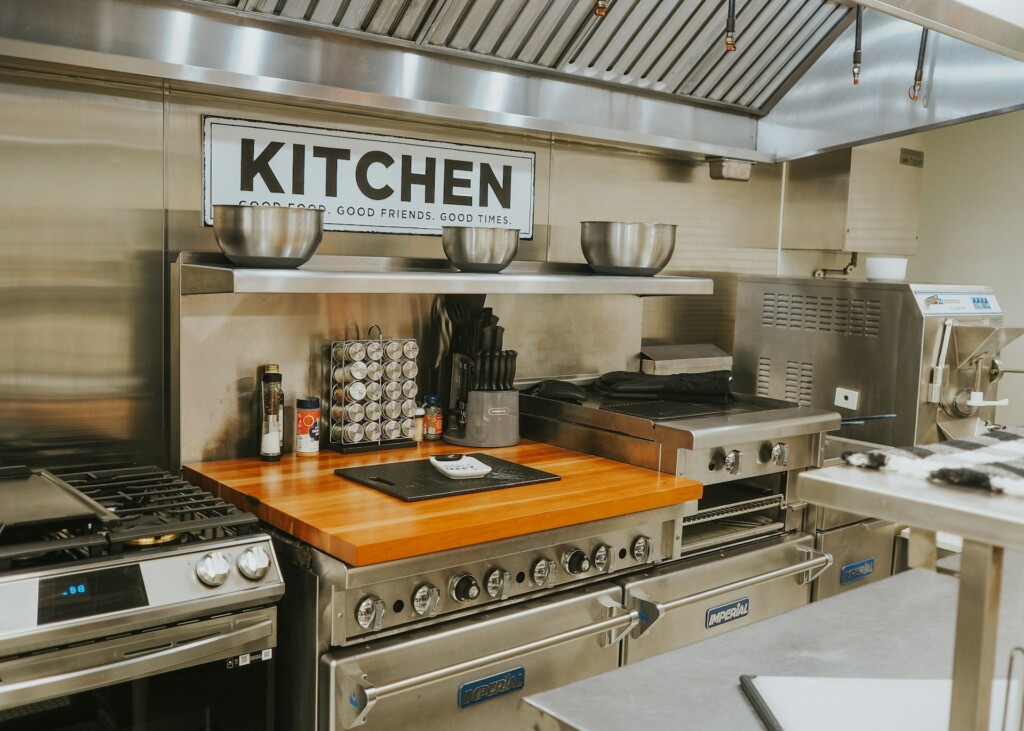
The ghost kitchen model represents a fundamental shift in how we approach food service construction. Small footprints, delivery-focused workflows, and accelerated launch timelines define this space. We’ve found that strategic planning around layout efficiency, ventilation compliance, and modular build components creates kitchens that can adapt as operators refine their concepts and expand their reach.
Success in ghost kitchen construction starts with understanding the delivery workflow from order receipt to courier handoff. Map your target delivery radius first, then design spaces around that operational reality. Confirm zoning approvals and health department permits early in the process, as these approvals often drive equipment specifications and layout requirements. Prioritize modular panels for cold storage and flexible prep stations that can accommodate menu pivots or additional virtual brands. Simple order management technology integrated during construction prevents costly retrofits later.
Contact EB3 Construction to develop a compliant, scalable ghost kitchen that supports your delivery operations and growth plans.
